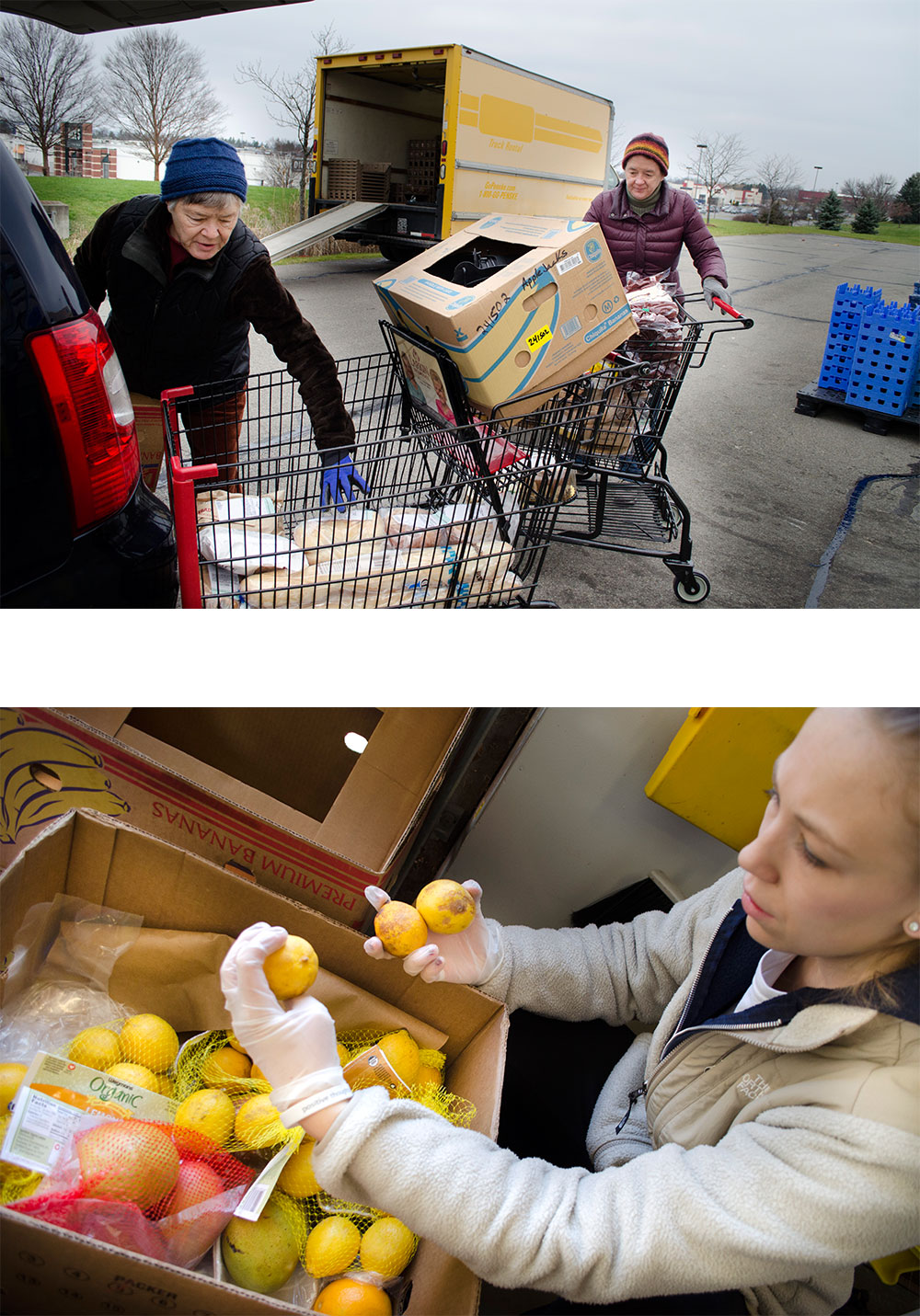What We Do
Simply put, FDN rescues food and reduces hunger in our community.
FDN focuses on rescuing foods that have a limited shelf life and so are not typically available in a traditional food bank model. These nutritious foods, such as fresh fruits, vegetables, and breads, are donated by local food outlets, including stores, restaurants, farms and colleges. Every day, volunteers deliver these perishable items directly to local pantries and other community food programs. FDN calls upon its network of volunteers to respond quickly once food becomes available, in order to ensure that food is distributed within a few hours on the day it is picked up. If FDN did not exist, most of this food would be discarded, contributing to environmental degradation and increased hunger.
You may be wondering how a food rescue organization, like FDN, is different from a food bank. FDN serves as the liaison between food donors and food distribution programs. We never purchase food and we never sell food. We handle exclusively food donations, primarily food that is unsaleable. Our grassroots network of volunteers enables us to be nimble and efficient in our operations and availability. FDN differs from a food bank in its approach to obtaining food. Food banks must charge member programs for overhead per pound or package of food. FDN encourages all its programs to become members of a food bank so that they may offer a wider assortment of food as well as a more reliable source of food at each of the pantries. The two programs are complementary: several of the hunger-relief programs that FDN serves also partner with a regional food bank. Thus, they are able to offer a greater variety and quantity of perishable and non-perishable food at each pantry and program.
Every year, FDN rescues about 500,000 lbs of fresh food. That’s food that would otherwise be wasted that ends up instead in the hands of about 30 hunger-relief programs in our area. How to visualize 500,000 lbs? It’s 250 tons, which is roughly the weight of 38 African elephants. African elephants are the big ones. Maybe not so helpful. Well then, how many people does that feed? Let’s see, we know that the average American eats about 603 lbs of whole fruits and vegetables a year, which means we rescue enough to take care of the produce needs of 829 people.
As part of our food rescue program, FDN serves as a one-call center for individuals and business seven days a week. For anyone wishing to donate food, please contact us.
But wait, there’s more. FDN knows all about food waste and recovery, and uses this knowledge base to design and present educational programs to youth groups and local schools. Likewise, we are in the know on the food and nutrition scene in our local area. We link pantries and hunger-relief programs with local resources that may be useful or interesting for their clients – such as classes on nutrition, cooking, gardening and growing your own food. Want to pick our brains on food rescue or local resources? Contact us.

